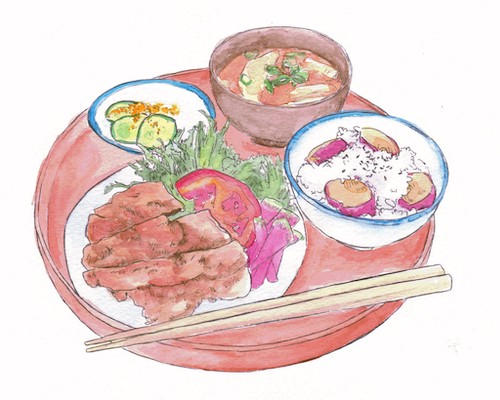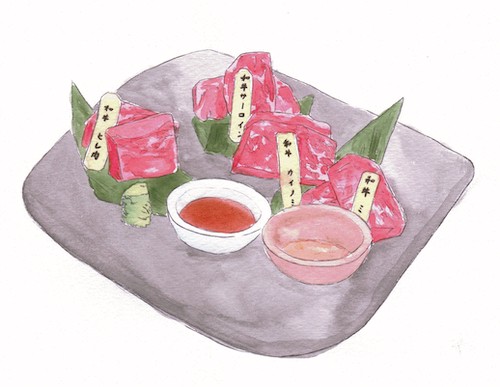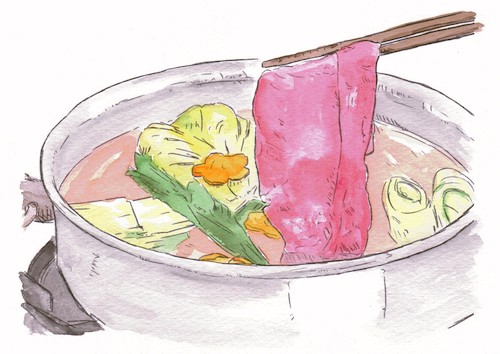
It’s not about going vegan, it’s actually much simpler
It’s not that I don’t want to go vegan — thinking about the environmental impact of meat consumption and the health benefits of eating plant-based, it seems like an ideal lifestyle choice that would fall in line with my values. But it can also be hard for multiple reasons.
Meat alternatives aren’t necessarily healthier
Although the meat-alternative industry is booming, these products still fall short on nutritional factors. They contain a lot of processed fats such as sunflower oil and canola oil, chemically altered fats which have been shown to lead to heart disease and other chronic inflammatory diseases. They can be high in sodium (higher than regular burgers on average) and contain a lot of highly processed ingredients, such as protein isolated from plants, which isn’t particularly surprising considering it’s a plant-based product designed to taste like meat.
But to be vegan, you don’t necessarily need to eat meat alternatives — a diet of veggie burgers, tofu, and other soy and plant products work as well. But no sauce or dressing can make seitan or beans taste like meat. In addition, if you enjoy meat and it’s a large part of your culture and upbringing, it could be even more challenging to make the switch. And like any new diet, it would require diligence and planning that not everyone has the time to commit.

Thin-Sliced Meat as an In-Between
I realized that there was a different approach to incorporating meat into a healthful and sustainable diet in Japan. Not that Japanese people don’t eat meat often — in fact, I’d say that most people eat it every day — but meat is incorporated into meals in a way that I don’t often see in the United States: thinly sliced, served with vegetables.
A lot of classic Japanese meat dishes are served with thinly sliced meat — shouga ginger pork, niku-jyaga, and hayashi rice, just to name a few. If you visit the meat section in a supermarket in Japan, you’ll quickly realize that the selection of beef and pork steaks is sparse. In comparison, the selection of thinly sliced meats is much greater. If you look for meat options on the menu of a traditional Japanese restaurant, even where the meat is the main, it is often served thinly sliced with an assortment of vegetables or tofu. It became clear to me that Japanese people eat meat often, but they’re not eating a lot.
Better Because
Ethical preference aside, animal fats help trigger satiety and satisfaction cues that low-fat meals and polyunsaturated vegetable fats can’t accomplish. This is an important signal necessary for those who wish to adhere to an intuition-first diet — a key principle on which I, and many other Japanese, rely on to maintain a healthy and sustainable diet.
Animal products are also abundant in vitamins and minerals that are more difficult to derive from plant-based products, such as retinol, heme iron, and vitamin B12, among others nutrients (NTA, Big Fat Lies). While some of these nutrients can be converted in our body, we need to dedicate extra time and energy into making sure we are eating enough of these plants which contain these nutrients, and also be in tune with our body to understand if we are properly converting and absorbing these nutrients. The alternative is just consuming meat, only being generally aware of what we’re eating to know that we are getting all the nutrients we need.

Instead of eliminating meat, the Japanese way of eating healthfully is much more focused on balance, and creating dishes that use meat and vegetables together. Ideally, from ethically raised sources. Rather than regularly eating big steaks and chunks of meat, or completing eliminating them from our meals altogether, it’s about incorporating the flavors and fats of animal-based products to signal satiety and create well-rounded dishes that we want to eat again and again.
There’s nothing wrong with a vegan diet and it’s a commendable choice for those who choose to pursue it, but it’s not a one-size-fits-all world, and it’s not the optimal diet for all of us. Pursuing both better health and minimizing my personal environmental impact, instead of going vegan I turn to the Japanese way of eating less meat: thinly sliced, served with vegetables.


If you enjoyed this piece email me at kokumura@kakikata.space! I welcome questions and comments, and look forward to hearing from you! Warm regards, Kaki 🌱